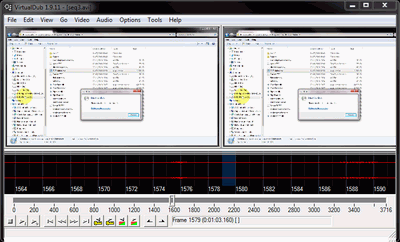

Our hypothesis was that the precision of the I-SFI would reduce the number of experimental animals used and the number of experiments needed for evaluation. The ladder beam walking test serves as an external reference, since it assesses the combination of motor and sensory function and correlates with the SFI (Farr et al., 2006 Cummings et al., 2007 Rupp et al., 2007 Metz and Whishaw, 2009 Antonow-Schlorke et al., 2013). In this study, we compared conventional SFI (C-SFI) with a novel self-made infrared system (I-SFI). Print length is the distance between 1 and 4, while toe spread is the distance between 2 and 3. After contrast enhancement, it is easy to extract the data for calculating the sciatic functional index. At first, the video is saved as a stack of frames and the region of interest is “cropped” using ImageJ software. Figure 1:Įxample of the processing of three frames recorded using the new infrared system.(A) Frame 1 at 4.8 seconds (B) frame 2 at 5.0 seconds (C) frame 3 at 5.2 seconds. These drawbacks mean that the experiments need numerous animals and involve considerable effort and expense. If the researcher chooses this kind of long footprint for evaluation, the variance will increase. For example, every time an animal stops during a run, it presses down with its entire foot pad and heel, creating longer footprints than it would while walking. The researcher will not know if a mouse was sitting, hesitating, constantly moving, running, or jumping. Second, the researcher who selects the footprints for analysis does not have access to essential dynamic information (Dijkstra et al., 2000 Sarikcioglu et al., 2009), and so cannot relate the footprints to the circumstances under which they were made. First, as the footprints are obtained with ink and paper, distortions are frequent and smearing artefacts are unavoidable ( Figure 1). The conventional method of acquiring the SFI has two major disadvantages with regard to precision.

It allows researchers to determine the state of functional regeneration after unilateral injury to the sciatic nerve by comparing footprints from the affected side with those from the unaffected side (Bain et al., 1989 Inserra et al., 1998 Yao et al., 1998). The sciatic functional index (SFI) is a reliable, reproducible, quantitative and widely used test for assessing peripheral nerve recovery in rats and mice (de Medinaceli et al., 1982 Monte-Raso et al., 2008). In view of the stagnation in improvements to clinical outcomes (Irintchev et al., 2005), we believe there is an urgent need to tackle this issue via specification and improved objectivity. There are many studies producing contradictory results (Nichols et al., 2004 Neubauer et al., 2010 Brushart, 2011). Numerous tests exist for evaluating nerve regeneration in experimental animal models, and they can be assessed in very different ways (Navarro, 2016). Our results show that the process of obtaining the SFI can be made more precise via digitization with a self-made, low-cost infrared system. The system thus requires fewer measurement repetitions and fewer animals, and cuts the cost of keeping the animals. I-SFI assessment reduced the standard deviation by about 33 percent, from 11.6 to 7.8, and cut the variance around the baseline to 21 percent.

Additionally we performed an analysis with the ladder beam walking test (LBWT) as a reference test. Our apparatus visualized footprints with totally internally reflected infrared light (950 nm) and a camera that can only detect this wavelength. We compared two SFI evaluation methods, i.e., conventional ink-and-paper SFI (C-SFI) and our infrared system (I-SFI). They were evaluated on the day before surgery, the 2 nd, 4 th and 6 th days after injury, and then every day up to the 23 rd day after injury. Mice were subjected to unilateral sciatic nerve crush injury (crush group n = 7) and sham operation (sham group n = 4). This study aimed to evaluate the applicability and precision of a self-made, low-cost infrared system for evaluating SFI in mice. However, the systems are expensive (€40,000). Modern applications use digitized systems that can deliver results with less analytical effort and fewer mice. Drawbacks include smearing artefacts and a lack of dynamic information during measurement. The sciatic functional index (SFI) is a popular parameter for peripheral nerve evaluation that relies on footprints obtained with ink and paper.


 0 kommentar(er)
0 kommentar(er)
